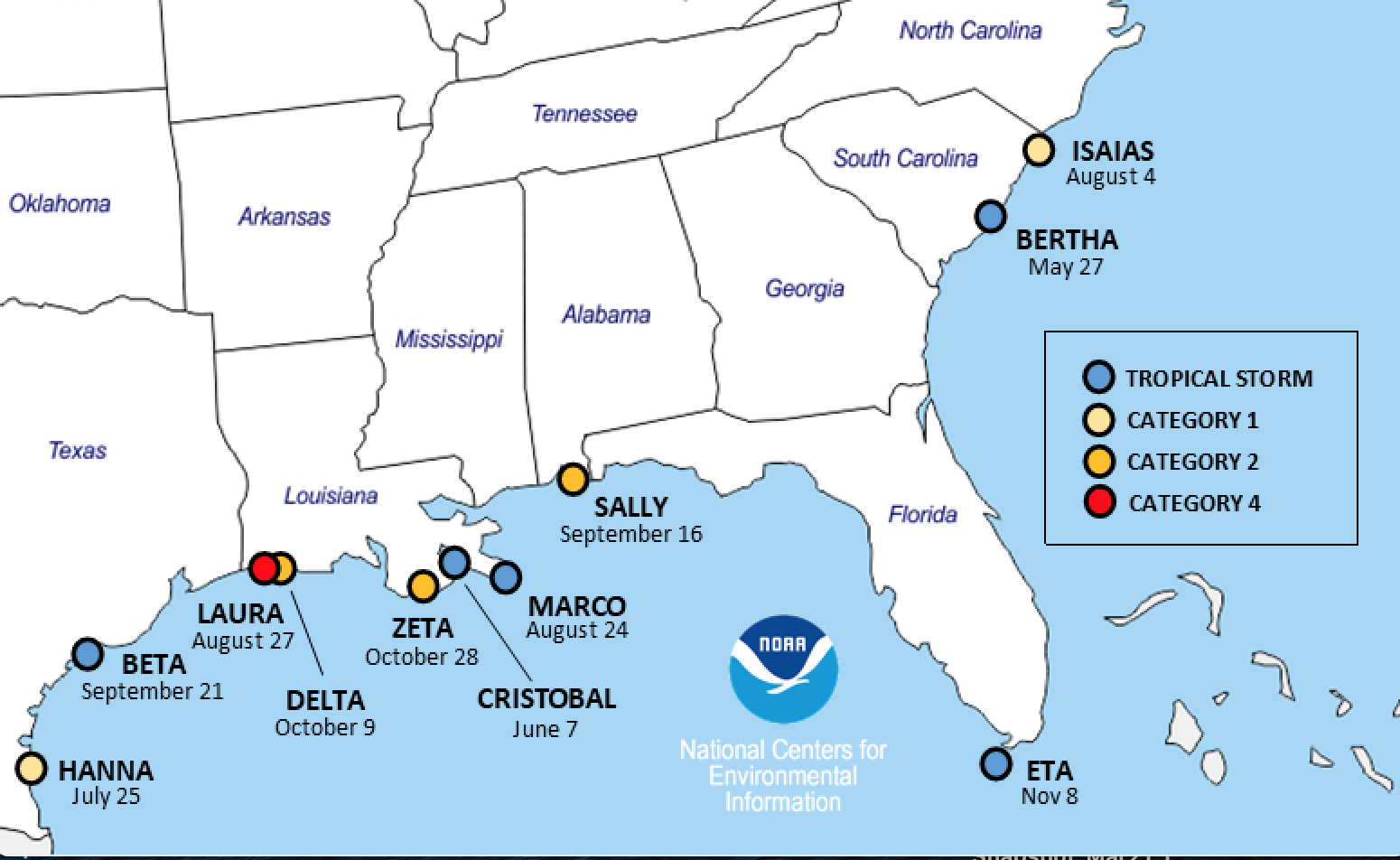A dozen tropical storm systems made landfall on the U.S. coast in 2020, with Hurricane Laura leading among seven hurricanes that each inflicted at least $1 billion in damage on the Gulf of Mexico and South Atlantic coasts.
The annual National Oceanic and Atmospheric Administration’s climate report shows 2020 effectively tied 2016 as the warmest year on record, said Gavin Schmidt, director of NASA’s Goddard Institute of Space Studies, said in an online presentation Thursday with Russell Vose, chief of the analysis and synthesis branch at NOAA’s National Centers for Environmental Information.
“It’s a statistical tie either way” looking at both NOAA and NASA data for 2016 and 2020, said Schmidt.
“What’s really striking is the last six or seven years” of average temperature creeping up, said Vose. “There’s been a steady increase in temperatures since the 1960s,” with temperatures rising faster in the past 50 years than the previous 2,000 years, he added.
The NOAA report catalogs new temperature records and extreme weather events around the world and across the U.S. Those impacts include an unprecedented Atlantic hurricane season.
Nicaragua was slammed by two late season category 4 storms, Eta and Iota, that struck with two weeks, their landfalling tracks 25 kilometers (15.5 miles) apart. Twelve tropical systems made landfall in the continental U.S., breaking the previous record of nine landfalls set in 1916, the report notes.
Seven of those ravaged the Gulf of Mexico and South Atlantic coasts with at least $1 billion each in damages – led by Hurricane Laura, a category 4 that slammed into the western Louisiana coast around Lake Charles, La.
The overall Atlantic tropical season produced 30 named storms, breaking the record of 28 set in 2005. Worldwide, 103 named tropical system arose in the world’s oceans, tying the number from 2018, said Schmidt.
One aspect is how scientists calculate the North Atlantic accounted for about 30 percent of the total energy generated by tropical storms in 2020 – twice the normal annual proportion, he said.
In the Arctic, a mild winter and record summer heat over Siberia were recorded as Arctic shipping lanes offshore had an open-water season over 100 days, said Vose: “The northern sea route finally froze in November.”
“We estimate that the Arctic as a whole was warmer,” said Schmidt. The seasonally shrinking Arctic sea ice was smallest in average extent since 2016, he said.







